Toona sinensis, also known as salad tree, is an ornamental tree with edible foliage. Native to Asia, mainly China, its tender aromatic leaves are eaten cooked or raw. This deciduous tree, with a light silhouette, bears long pinnate, aromatic leaves that release an onion scent when crushed. Some cultivars such as ‘Flamingo’ also offer extraordinary, changing leaf colours. Its spring to summer flowering, although discreet, is scented. Relatively hardy (-12 to -15 °C), it is easy to grow in fertile, cool soil, sheltered from cold winds, in regions with fairly mild winters. Offer an alternative to traditional vegetables and discover this small Chinese tree whose young leaves are considered a delicacy in Asia.
Toona sinensis: what is it?
Toona sinensis, or Chinese toon, is a little-known tree of the Meliaceae family. This "vegetable tree" is deeply rooted in Asian culinary tradition where its young, tender aromatic leaves feature in dishes to enliven salads or flavour meals and are traditionally eaten as a vegetable. It is these leaves that have earned Toona sinensis the nickname salad tree, used in many recipes for their delicate taste and texture.
Native to East Asia, particularly China, this tree is prized for its deciduous, elegant foliage divided into long leaflets and its scented flowers. Beyond culinary use, Toona sinensis is also valued for its ornamental qualities in gardens. It is an attractive ornamental tree with a slender, airy habit. Fast-growing, it reaches on average 10 to 20 m in height at maturity, depending on variety. Its foliage changing colour through seasons, from fresh green in spring to red or orange tones in autumn, is its main asset. The Toona sinensis 'Flamingo' is a particularly decorative cultivar with extraordinary shrimp-pink young shoots in spring, turning green in summer, then yellow-orange in autumn. In winter, Toona reveals grey, fissured bark with a resinous scent reminiscent of cedar. Flowering in rather discreet creamy-white clusters occurs from May to early July depending on climate, on older specimens. Semi-hardy, it tolerates short frosts around -10 to -15°C once well established and settles in regions with mild winters. It prefers sun, shelter from cold winds and will root in deep, fertile, light, well-drained soil that stays cool year-round. It makes a fine avenue tree but also a magnificent specimen when planted alone.
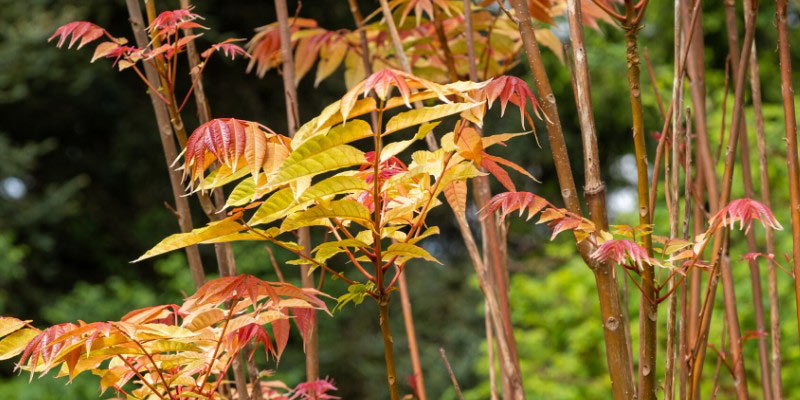
What does it taste like and what is its nutritional value?
Leaves of Toona sinensis offer a complex, unique flavour. Their taste is a blend of onion and garlic, reminiscent of a stock cube with a nutty note. Young shoots enliven salads, noodles or rice. They can also make a delicious aromatic tea. This gustatory richness makes them ideal to add an exotic, fresh touch to dishes. Nutritionally, Toona sinensis is a treasure. Its young leaves are a valuable source of vitamins and minerals. They notably contain vitamins A and C, and minerals such as iron and calcium. Rich in carotenoids and flavonoids, they are thought to have antioxidant properties, helping to combat damage from free radicals. In traditional Chinese medicine, they are used for their anti-inflammatory and antiviral properties.
When and how to harvest the leaves?
Harvest of Toona sinensis leaves should be timed to ensure optimal flavour. Prefer early spring, when leaves are still young and tender. Pick as required. Cut young shoots gently using a pruning shear that has been well disinfected, taking care not to damage the tree.
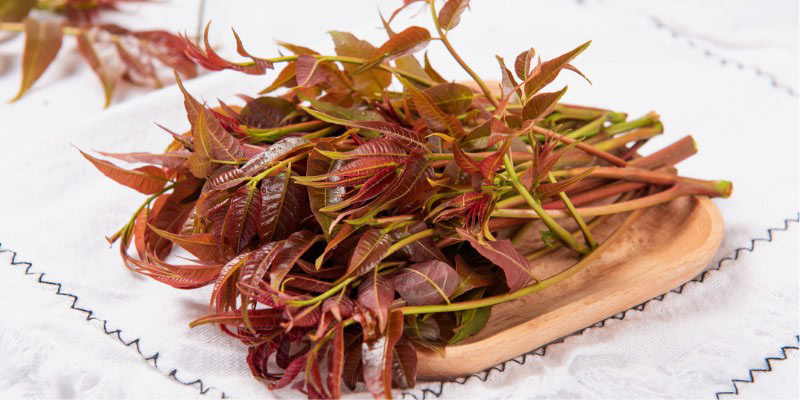
How to prepare them?
To prepare Toona sinensis leaves:
- Start by washing leaves well under cold running water to remove dirt or small insects. Drain thoroughly or use a salad spinner to dry.
- They can be finely sliced to use in salads, soups or as a garnish. To do this, stack several leaves, roll them tightly and cut into thin strips.
- To mellow their flavour, you can blanch the leaves. Briefly plunge them into salted boiling water for one minute, then transfer immediately to an ice-water bath to stop cooking and preserve bright colour.
- Toona sinensis leaves can be stir-fried with garlic, onion or other vegetables. Heat a little oil in a pan, add the sliced leaves and stir-fry quickly over high heat until tender but still crisp.
- Leaves can be used fresh, as an aromatic herb, added at end of cooking to preserve flavour and texture.
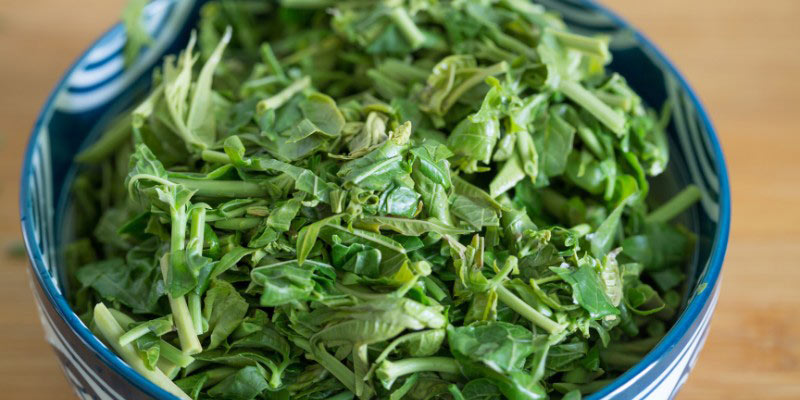
Recipes to try with Toona sinensis
Recipes are endless, from fresh crisp salads to refined stir-fries. Here are ideas to incorporate Toona sinensis leaves into dishes:
- Spring salad: Mix sliced Toona leaves with other spring greens such as rocket or spinach. Add cucumber slices, cherry tomatoes, and dress with a vinaigrette of olive oil, lemon juice, salt and pepper.
- Omelette: Beat some eggs with salt and pepper. Heat a pan with a little butter or oil, pour in eggs and add a handful of sliced Toona leaves. Cook until eggs set, then serve hot.
- Asian soup: Prepare a vegetable or chicken stock, add grated fresh ginger, garlic, and simmer. Add rice noodles, mushrooms, and finish by adding Toona leaves at end of cooking so they remain tender.
- Fried rice: Fry garlic and onions in a wok, add cooked rice, peas, diced carrots, and tofu or prawns. Stir in Toona leaves towards end of cooking and season with soy sauce.
- Toona sinensis pesto: Blend Toona leaves with garlic, pine nuts or walnuts, grated Parmesan and olive oil to make an original pesto. Use on pasta, as a pizza topping, or as a condiment for sandwiches.
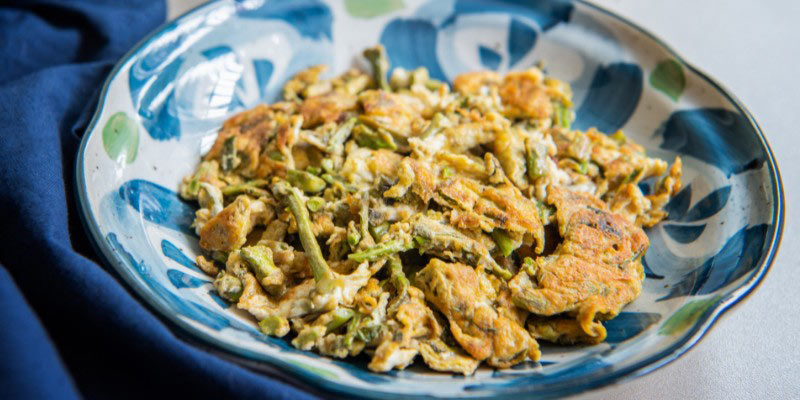






























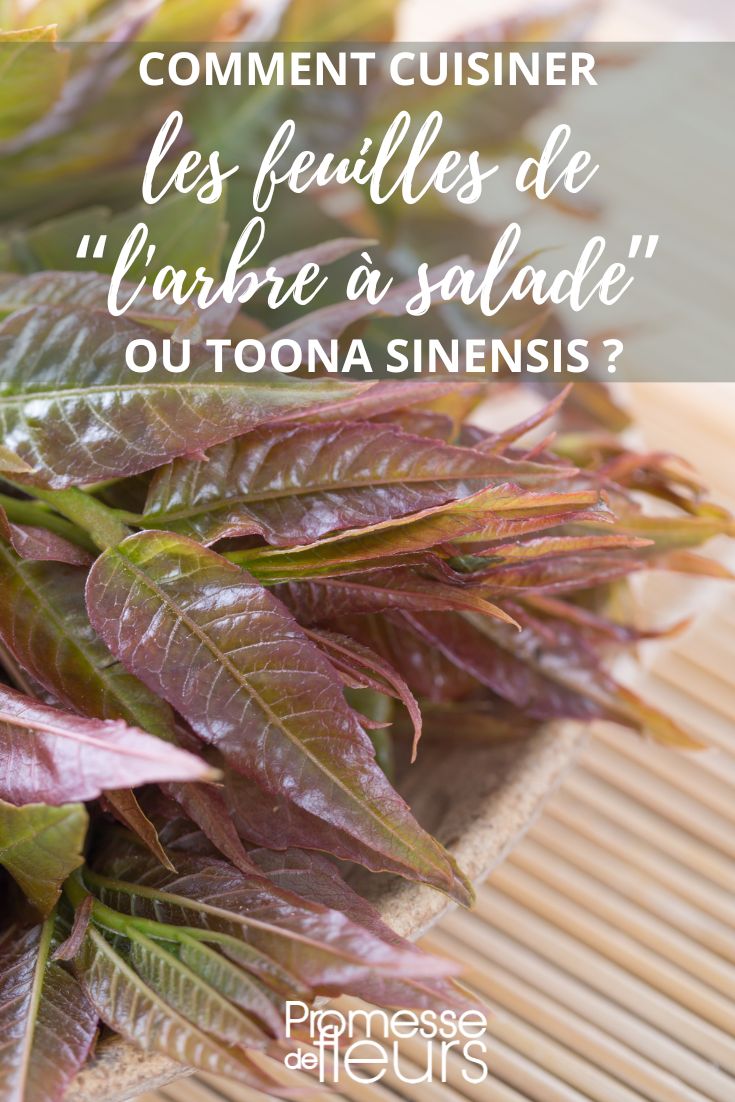
Comments